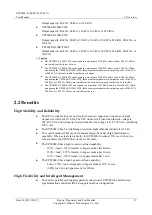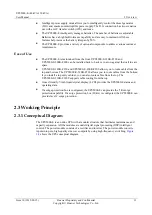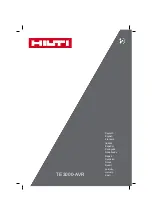
UPS5000-E-(40 kVA-320 kVA)
User Manual
2 Overview
Issue 10 (2015-09-15)
Huawei Proprietary and Confidential
Copyright © Huawei Technologies Co., Ltd.
25
2.4.2.4 (Optional) Backfeed Protection Card
Energy backfeed may be dangerous for the UPS, loads, and maintenance personnel. When
backfeed occurs, the backfeed protection card triggers alarm signals or quickly disconnects
the backfeed loop. The backfeed protection card uses relay contact signals. The signal ports
support any power signals with a voltage of no more than 240 V AC and a current of less than
4 A. For details, see the
UPS Backfeed Protection Card User Manual
.
2.4.2.5 (Optional) Dry Contact Extended Card
The dry contact extended card provides five signal output ports and five signal input ports.
For details, see the
UPS Dry Contact Extended Card User Manual
.
2.4.2.6 Monitoring Interface Card
The monitoring interface card provides external ports as well as monitoring and control
functions for the MDU. The ports include the ambient temperature and humidity sensor port,
battery monitoring unit (BMU) port, FE port, battery temperature monitoring port, and
network management port. Interworking with the monitoring interface card, the MDU
monitors the UPS, configures parameters, delivers commands, reports information, and
displays the UPS key information and parameters on the LCD.
shows the monitoring interface card.
Figure 2-13
Monitoring interface card
describes the ports on the monitoring interface card.
Table 2-4
Ports on the monitoring interface card
Port
Silk
Screen
Description
DO_1
NO
DO indicates critical alarms, minor alarms, bypass mode,
battery mode, low battery voltage, or D.G. control. DO_1
indicates any of the six meanings (except for D.G. control); by
default, it indicates critical alarms. The maximum voltage is 30
V DC, and the maximum current is 1 A.
COM
DO_2
NO
DO indicates critical alarms, minor alarms, bypass mode,
battery mode, low battery voltage, or D.G. control. DO_2
indicates any of the six meanings (except for D.G. control); by
COM
















































